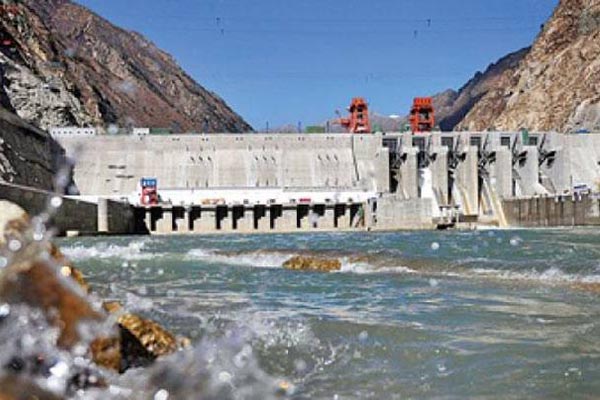Tibetet Segítő Társaság Sambhala Tibet Központ
Tibet Support Association Sambhala Tibet Center
székhely / telephely H-Budapest I. Attila út 123..
(00-36) 70 431 9343 (00-36)70 944 0260 (06-1)782 7721
sambhala@tibet.hu www.tibet.hu tibetpress.info
Facebook/Sambhala Tibet Központ Facebook/Tibett Segítő Társaság
MagnetBank/ 16200010-00110240
IBAN/HU94 16200010 00110240 00000000 SWIFT/HBWEHUHB
(1%) adószám/ 18061347-1-41
nyitva tartás/hétköznap 12.00-20.00 hétvégén előadás függő
» tibeti művészet» lapszemle.hu» thetibetpost.com» eastinfo.hu» rangzen.net» ChoegyalTenzin» tibet.net» phayul.com» DalaiLama.com» vilaghelyzete.blogspot.com» Videók» Linkek» TibetiHírek» Szerkesztőség
China blocks Brahmaputra tributary to build dam/ENG
2016. október 1./PTI/Tibet Sun/TibetPress
eredeti cikk
China has blocked a tributary of the mighty Brahmaputra in Tibet as part of the construction of its “most expensive” hydro-power project which could cause concern in India as it may impact water flows into the lower riparian countries, state media reported today.
The Lalho project on Xiabuqu river, a tributary of Yarlung Zangbo (the Tibetan name for Brahmaputra), in Xigaze in Tibet involves an investment of 4.95 billion yuan (USD 740 million), Zhang Yunbao, head of the project’s administration bureau was quoted as saying by the state-run Xinhua news agency.
Xigaze — also known as Shigatse — is located close to Sikkim, and from here the Brahmaputra flows into Arunachal Pradesh.
The report has called Lalho the “most expensive project”, whose construction began in June 2014 and is scheduled to be completed in 2019.
It is not clear yet what impact the blockade of the river will have on the flow of water from the Brahmaputra into the lower riparian countries like India and Bangladesh.
Last year, China had operationalised the USD 1.5 billion Zam Hydropower Station, the largest in Tibet, built on the Brahmaputra river, which has raised concerns in India.
But China has been maintaining that it has taken into consideration India’s concerns and allays apprehensions of restricting the flow of water, saying its dams are run of the river projects not designed to hold water.
The outline of China’s 12th Five Year Plan indicates that three more hydropower projects on the mainstream of the Brahmaputra river in Tibet Autonomous Region have been approved for implementation.
In March, Union Minister of State for Water Resources Sanwar Lal Jat said in a statement that India had expressed its concerns to China about the likely impact of the dams.
While there is no water-sharing treaty between the countries, India and China established an Expert Level Mechanism (ELM) on trans-border rivers and in October 2013 the two governments signed a memorandum of understanding on strengthening cooperation on trans-border rivers under which Beijing provides data to India on the water flows.
The blockade of the Brahmaputra river tributary comes at a time of India’s reported decision to suspend talks with Pakistan under the Indus Water Treaty as part of its efforts to hit back at Pakistan in the aftermath of the Uri attack.
Chinese Foreign Ministry spokesman Geng Shuang gave a guarded reply when asked on 27 September about India’s reported move.
“As a friendly neighbour to both India and Pakistan, China hopes that India and Pakistan can properly address disputes and improve relations through dialogue and consultation, maintain and enhance all-round cooperation and join hands to promote regional peace, stability and development,” Shuang told PTI.
Some of the rivers under the Indus Water Treaty originate in China.
